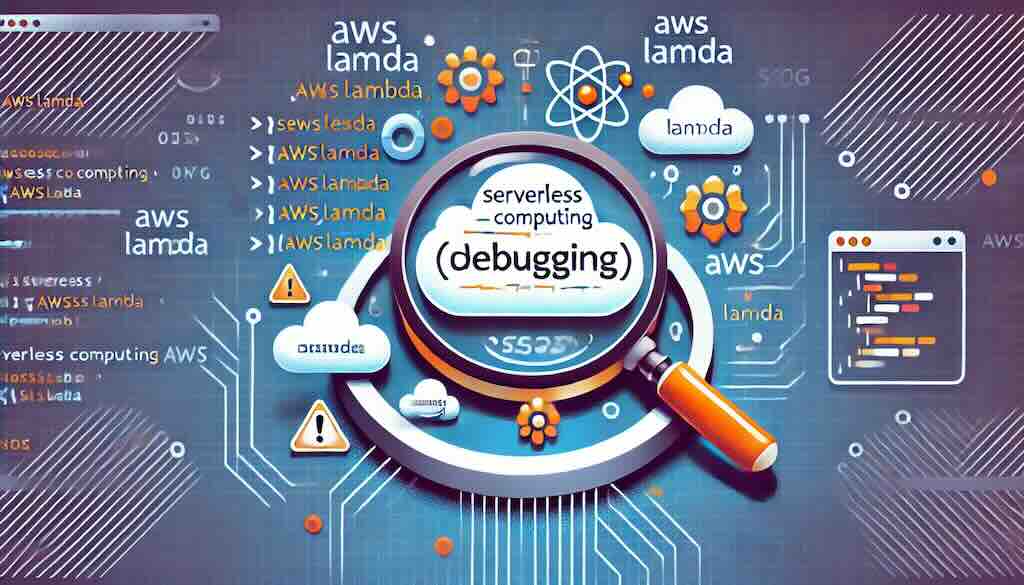AI stack attack: Navigating the generative tech maze

Successful integration often depends on having a solid foundation of data and
processing capabilities. “Do you have a real-time system? Do you have stream
processing? Do you have batch processing capabilities?” asks Intuit’s
Srivastava. These underlying systems form the backbone upon which advanced AI
capabilities can be built. For many organizations, the challenge lies in
connecting AI systems with diverse and often siloed data sources. Illumex has
focused on this problem, developing solutions that can work with existing data
infrastructures. “We can actually connect to the data where it is. We don’t need
them to move that data,” explains Tokarev Sela. This approach allows enterprises
to leverage their existing data assets without requiring extensive
restructuring. Integration challenges extend beyond just data connectivity. ...
Security integration is another crucial consideration. As AI systems often deal
with sensitive data and make important decisions, they must be incorporated into
existing security frameworks and comply with organizational policies and
regulatory requirements.
How to Architect Software for a Greener Future
Firstly, it’s a time shift, moving to a greener time. You can use burstable or
flexible instances to achieve this. It’s essentially a sophisticated
scheduling problem, akin to looking at a forecast to determine when the grid
will be greenest—or conversely, how to avoid peak dirty periods. There are
various methods to facilitate this on the operational side. Naturally, this
strategy should apply primarily to non-demanding workloads. ... Another
carbon-aware action you can take is location shifting—moving your workload to
a greener location. This approach isn’t always feasible but works well when
network costs are low, and privacy considerations allow. ... Resiliency is
another significant factor. Many green practices, like autoscaling, improve
software resilience by adapting to demand variability. Carbon awareness
actions also serve to future-proof your software for a post-energy transition
world, where considerations like carbon caps and budgets may become
commonplace. Establishing mechanisms now prepares your software for future
regulatory and environmental challenges.
Evaluating board maturity: essential steps for advanced governance

Most boards lack a firm grasp of fundamental governance principles. I'd go so
far as to say that 8 or 9 out of 10 boards could be described this way. Your
average board director is intelligent and respected within their communities.
But they often don't receive meaningful governance training. Instead, they
follow established board norms without questioning them, which can lead to
significant governance failures. Consider Enron, Wells Fargo, Volkswagen AG,
Theranos, and, recently, Boeing—all have boards filled with recognized
experts. However inadequate oversight caused or allowed them to make serious
and damaging errors. This is most starkly illustrated by Barney Frank,
co-author of the Dodd-Frank Act (passed following the 2008 financial crisis)
and a board member of Silicon Valley Bank while it collapsed. Having brilliant
board members doesn't guarantee effective governance. The point is that, for
different reasons, consultants and experts can 'misread' where a board is at.
Frankly, this is most often due to just being lazy. But sometimes it is due to
just not being clear about what to look for.
Mastering Serverless Debugging

Feature flags allow you to enable or disable parts of your application without
deploying new code. This can be invaluable for isolating issues in a live
environment. By toggling specific features on or off, you can narrow down the
problematic areas and observe the application’s behavior under different
configurations. Implementing feature flags involves adding conditional checks
in your code that control the execution of specific features based on the
flag’s status. Monitoring the application with different flag settings helps
identify the source of bugs and allows you to test fixes without affecting the
entire user base. ... Logging is one of the most common and essential tools
for debugging serverless applications. I wrote and spoke a lot about logging
in the past. By logging all relevant data points, including inputs and outputs
of your functions, you can trace the flow of execution and identify where
things go wrong. However, excessive logging can increase costs, as serverless
billing is often based on execution time and resources used. It’s important to
strike a balance between sufficient logging and cost efficiency.
Implementing Data Fabric: 7 Key Steps

As businesses generate and collect vast amounts of data from diverse sources,
including cloud services, mobile applications, and IoT devices, the challenge
of managing, processing, and leveraging this data efficiently becomes
increasingly critical. Data fabric emerges as a holistic approach to address
these challenges by providing a unified architecture that integrates different
data management processes across various environments. This innovative
framework enables seamless data access, sharing, and analysis across the
organization irrespective of where the data resides – be it on-premises or in
multi-cloud environments. The significance of data fabric lies in its ability
to break down silos and foster a collaborative environment where information
is easily accessible and actionable insights can be derived. By implementing a
robust data fabric strategy, businesses can enhance their operational
efficiency, drive innovation, and create personalized customer experiences.
Implementing a data fabric strategy involves a comprehensive approach that
integrates various Data Management and processing disciplines across an
organization.
Empowering Self-Service Users in the Digital Age
Ultimately, portals must strike the balance between freedom and control, which
can be achieved by ensuring flexibility with role-based access control.
Granting end users the freedom to deploy within a secure framework of
predefined permissions creates an environment ripe for innovation within a
robustly protected environment. This means users can explore, experiment and
innovate without concerns about security boundaries or unnecessary hurdles.
But of course, as with any project, organizations can’t afford to build
something and consider that job done. Measuring success is ongoing. Metrics
such as how often the portal is accessed, who uses what, which service
catalogs are used and how the portal usage should be tracked, along with other
relevant data will help point to any areas that need improvement. It is also
important to remember that it is collaborative work between the platform team
and end users. And in technology, there is always room for improvement. For
instance, recent advances in AI/ML could soon be leveraged to analyze
previously inaccessible datasets and generate smarter and faster
decision-making.
Desperate for power, AI hosts turn to nuclear industry

As opposed to adding new green energy to meet AI’s power demands, tech
companies are seeking power from existing electricity resources. That could
raise prices for other customers and hold back emission-cutting goals,
according The Wall Street Journal and other sources. According to sources
cited by the WSJ, the owners of about one-third of US nuclear power plants are
in talks with tech companies to provide electricity to new data centers needed
to meet the demands of an artificial-intelligence boom. ... “The power
companies are having a real problem meeting the demands now,” Gold said. “To
build new plants, you’ve got to go through all kinds of hoops. That’s why
there’s a power plant shortage now in the country. When we get a really hot
day in this country, you see brownouts.” The available energy could go to the
highest bidder. Ironically, though, the bill for that power will be borne by
AI users, not its creators and providers. “Yeah, [AWS] is paying a billion
dollars a year in electrical bills, but their customers are paying them $2
billion a year. That’s how commerce works,” Gold said.
Fake network traffic is on the rise — here’s how to counter it

“Attempting to homogenize the bot world and the potential threat it poses is a
dangerous prospect. The fact is, it is not that simple, and cyber
professionals must understand the issue in the context of their own goals...”
... “Cyber professionals need to understand the bot ecosystem and the
resulting threats in order to protect their organizations from direct network
exploitation, indirect threat to the product through algorithm manipulation,
and a poor user experience, and the threat of users being targeted on their
platform,” Cooke says. “As well as [understanding] direct security threats
from malicious actors, cyber professionals need to understand the impact on
day-to-day issues like advertising and network management from bot profiles as
a whole,” she adds. “So cyber professionals must ensure that the problem is
tackled holistically, protecting their networks, data and their users from
this increasingly sophisticated threat. Measures to detect and prevent
malicious bot activity must be built into new releases, and cyber
professionals should act as educational evangelists for users to help them
help themselves with a strong awareness of the trademarks of fake traffic and
malicious profiles.”
Researchers reveal flaws in AI agent benchmarking

Since calling the models underlying most AI agents repeatedly can increase
accuracy, researchers can be tempted to build extremely expensive agents so
they can claim top spot in accuracy. But the paper described three simple
baseline agents developed by the authors that outperform many of the complex
architectures at much lower cost. ... Two factors determine the total cost of
running an agent: the one-time costs involved in optimizing the agent for a
task, and the variable costs incurred each time it is run. ... Researchers and
those who develop models have different benchmarking needs to those downstream
developers who are choosing an AI to use their applications. Model developers
and researchers don’t usually consider cost during their evaluations, while
for downstream developers, cost is a key factor. “There are several hurdles to
cost evaluation,” the paper noted. “Different providers can charge different
amounts for the same model, the cost of an API call might change overnight,
and cost might vary based on model developer decisions, such as whether bulk
API calls are charged differently.”
10 ways to prevent shadow AI disaster

Shadow AI is practically inevitable, says Arun Chandrasekaran, a distinguished
vice president analyst at research firm Gartner. Workers are curious about AI
tools, seeing them as a way to offload busy work and boost productivity.
Others want to master their use, seeing that as a way to prevent being
displaced by the technology. Others became comfortable with AI for personal
tasks and now want the technology on the job. ... shadow AI could cause
disruptions among the workforce, he says, as workers who are surreptitiously
using AI could have an unfair advantage over those employees who have not
brought in such tools. “It is not a dominant trend yet, but it is a concern we
hear in our discussions [with organizational leaders],” Chandrasekaran says.
Shadow AI could introduce legal issues, too. ... “There has to be more
awareness across the organization about the risks of AI, and CIOs need to be
more proactive about explaining the risks and spreading awareness about them
across the organization,” says Sreekanth Menon, global leader for AI/ML
services at Genpact, a global professional services and solutions
firm.
Quote for the day:
“In matters of principle, stand like a
rock; in matters of taste, swim with the current. ” -- Thomas Jefferson
No comments:
Post a Comment